Talos in Greek Mythology, although certainly a famous character, but is usually overshadowed by the story of Argonauts, who had a special place in the hearts of people in ancient Greece, as well as in their mythology. For the uninitiated, Argonauts were a group of heroes in ancient Greek mythology, who supposedly around the year 1300 BC, under the leadership of Jason, set out to find the Golden Fleece – a mythological sheep having golden woolly covering.
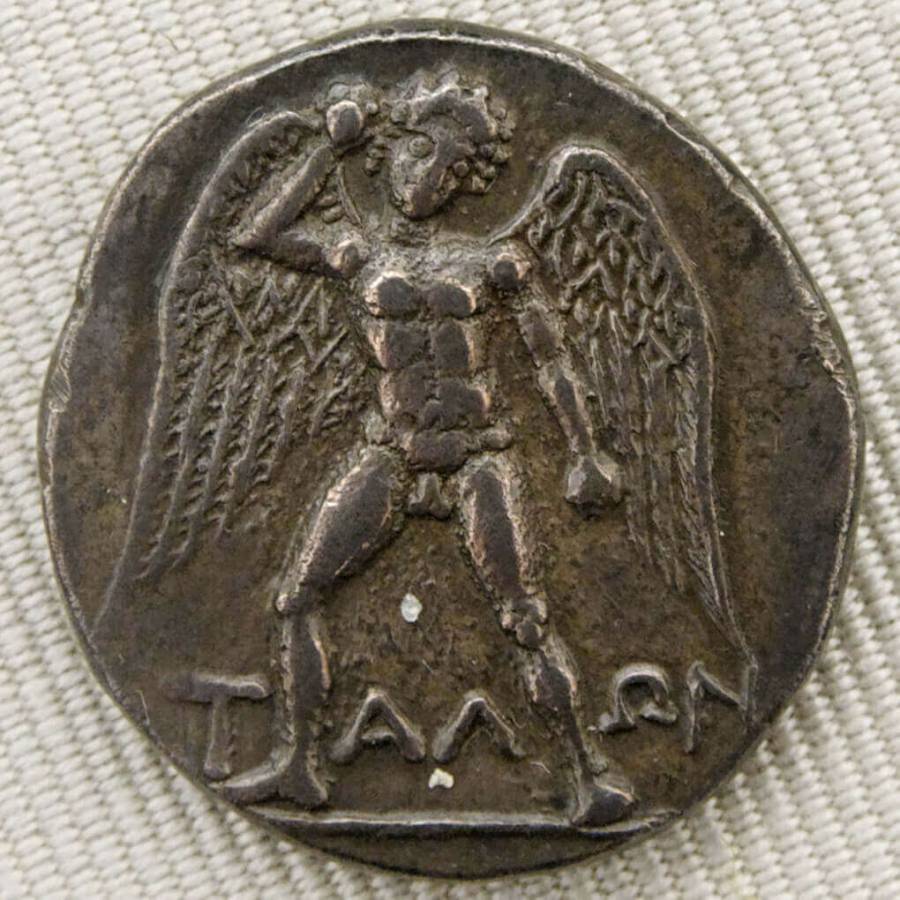
However, the mythical tale about Argonauts, as legendary and heroic as it may be, is not the story that we are going to discuss today. This is the story of Talos in Greek Mythology, where the Argonauts form a small but very important part of the whole scenario. Talos in Greek Mythology is also important for another important purpose – this is perhaps the first time a robot was described in such detail in the ancient literature.
The answer as to who was Talos in Greek mythology can be a bit difficult to answer when you consider the fact that there was more than one person/entity by that name. However, the most commonly accepted answer is that he was giant automation (or robot, in more simple terms) described in ancient Greek mythology. However, truth is rarely if ever so simple and especially when it comes to stories surrounding thousands of years old mythological figures.
The Origin of Talos Robot is described as two different stories, but both of these 2 stories agree on one point - that Talos robot was not born but made. According to one version, Zeus the king of gods was in love with Europa, a Phoenician princess (on whom Europe is named), and had 3 sons with her – Minos (the first king of Crete), Rhadamanthus and Sarpedon.
Zeus as a token of his affection gave Europa 3 gifts – the giant Talos Robot made by him, Laelaps – a golden dog that never lost its prey and a javelin that never missed its target. Of these gifts, Talos was later given by Europa to King Minos as a gift.
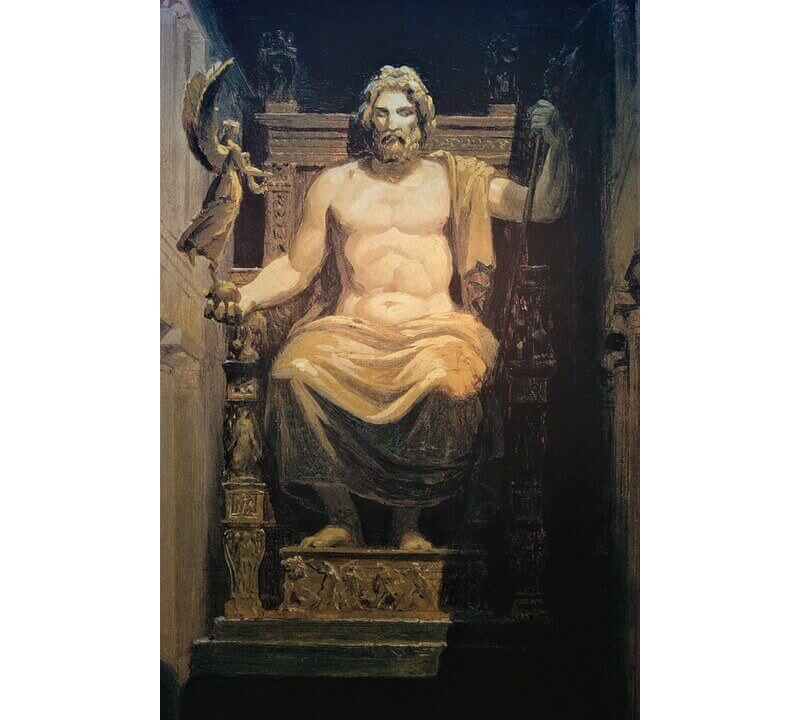
In some other version, the Talos robot is said to be created by Hephaestus (god of fire and blacksmiths) on the orders of Zeus & gifted to Minos (the king of Crete) to protect his land and people.
Talos in Greek mythology is described as a giant bronze (brass in some places) robot. In some ancient coins, Talos also appears as a naked man with wings but in many different Talos Greek mythology pictures, that have been found in historical texts, he does not have any wings.
This giant talos robot had a single vein, which started from his neck and ran down to his ankles carrying a liquid metal – Ichor (the liquid which flowed through the body of the gods & titans) which supposedly was his life source. In each ankle was a nail, that had been put into place, to ensure that this liquid metal did not drain out, which would cause him to die. This lifeblood of the giant was also considered as toxic for ordinary human beings.
As has been mentioned before Talos was entrusted with protecting the island of Crete from unwelcome visitors. Crete was a huge island measuring over 3000 square miles and Talos robot circled the whole island thrice a day. This should make it obvious about its huge size or perhaps Talos robot had wings to fly all around the island, as shown in some ancient coins.
Whenever a foreign ship reached close to the coastline of Crete, Talos robot would suddenly attack them by throwing huge pieces of rocks at them. If still the enemy ship or its survivors reached the island, Talos would jump into fire & heat up his external metal surface to tremendously high hot temperatures & embrace the intruders. The unsuspecting enemy would be crushed & burnt to death by this sudden turn of events.
In fact, one of the most famous stories of Talos in Greek mythology is closely related to the habit of Talos Robot to hold his enemies in a tight deathly embrace, which gave rise to the term – “Sardonic Smile”. A group of Sardinians who had tried to attack Crete was met by Talos robot, who held them in his deathly embrace. They reportedly died burnt & crushed, with a frightened grimace on their face, thus giving rise to the term – Sardonic Smile. Although some believe that it was not the tortured look of his victims but the terrible laugh of Talos, as he burnt & crushed his victims, that gave rise to this expression.

The function of the Talos robot was not always destructive. He had some constructive or a positive role in Crete too. He carried massive bronze tablets, which had divine laws inscribed on them to all the villages located in the island, three times a year, settling the disputes of the people according to the laws and thus acting as a judge & ensuring law and order was maintained in the towns & villages. Thus, Talos in Greek mythology also helped in enforcing the divine laws of the time.
As has been said before Talos robot’s main purpose was to defend the coastline of Crete from unwanted visitors and invaders. It was while doing his duty that he met his end by treachery. It is here that the story of Talos in Greek mythology meets the legendary tale of Jason and the Argonauts.
Jason and the Argonauts were on their way to Crete on their ship Argo, after obtaining the Golden Fleece. With them was the clever sorceress – Medea. Medea was the niece of the wife of King Minos (Pasiphae), which was probably an important reason they had chosen Crete as their next destination. They were in desperate need of freshwater and other vital supplies, for which they were approaching the island. Their intentions were honorable, but Talos robot had his job to do.
Jason tried to reason with Talos that after acquiring the vital provisions that they badly needed, they would leave the island, but Talos was in no mood to consider his pleas. Or perhaps Talos robot was not programmed to show compassion. Whatever may have been the reason Jason and the Argonauts soon realized, that reaching Crete wouldn’t be easy.
But how do men fight with a giant robot who is not willing to negotiate? Luckily the clever sorceress Medea found a way. She began to talk to Talos sweetly in an effort to manipulate him. She convinced Talos robot that she could provide Talos a way to become immortal, which would truly make him a god.
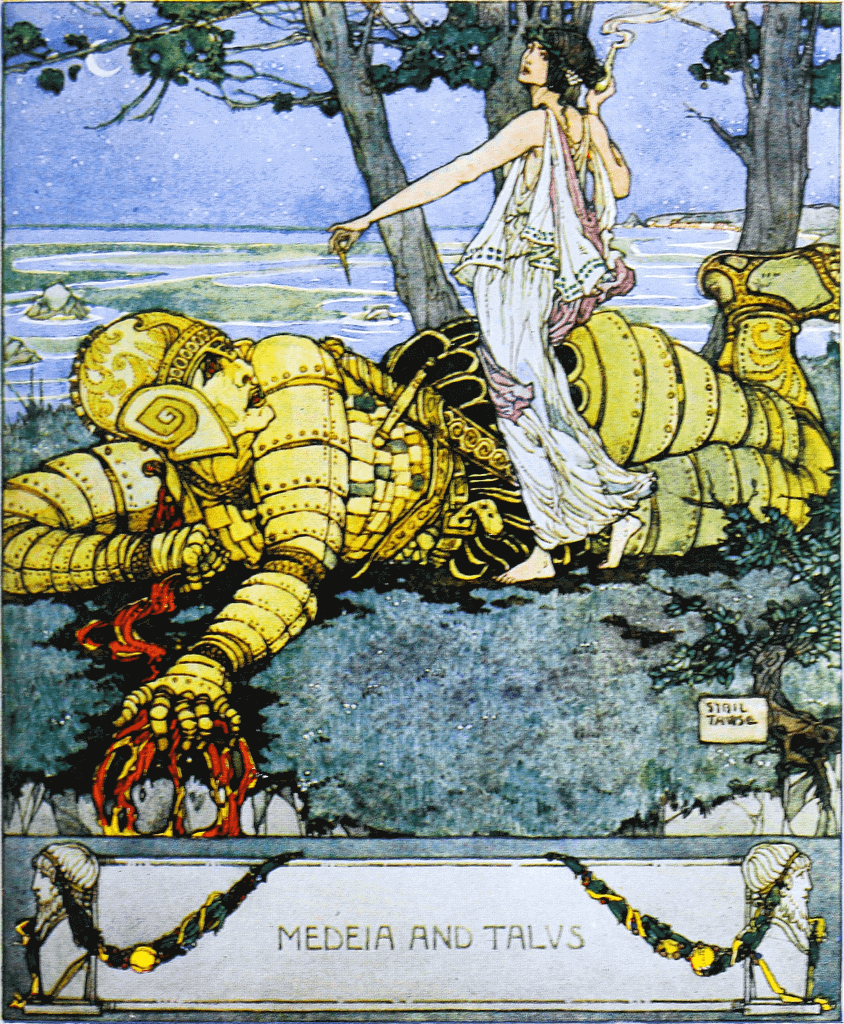
Talos was influenced by the words of Medea, who convinced him that removing the screw on his ankle would do the trick. As Talos robot had always wanted to be immortal and thus godlike in stature, he falls prey to Medea’s charming words and removes the peg/nail in his ankle. The ichor – golden liquid flowing in the vein of Talos thus becomes free to come out through the open orifice of the ankle of Talos, who thus met his end on the hands of a cunning woman, by bleeding to death.
Some sources believe that Talos was a god. Then, in that case, the next question that arises is - what is Talos the God of? Here it has to be mentioned, the word Talos also means the Sun in the Cretan dialect and on this island, Zeus was worshipped as Zeus Talos.
Talos is surprisingly also the name of another innovative creator, who was the nephew of the famous legendary Greek inventor - Daedalus (father of Icarus). Talos was a great inventor on his own right, who was credited with inventing the compass, the potter’s wheel and saw. The idea for the final item arose in his mind when he was using a snake’s jaw to cut a narrow piece of wood & decided to replicate the same in metal. His success made his uncle jealous, who finally murdered him by throwing him off the Acropolis. For this heinous crime, Daedalus was tried in court & sent to Crete as punishment.
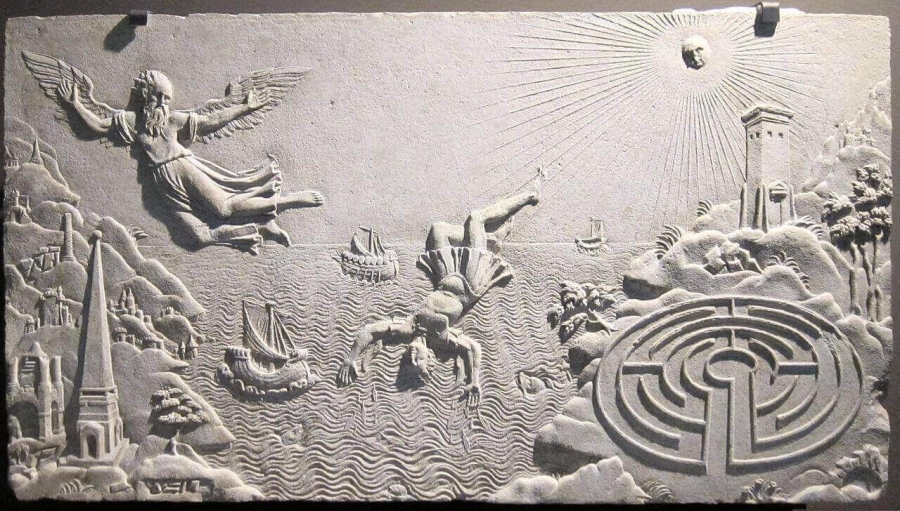
However, all legends related to Talos, describe him not as a human being or a divine god living in Mount Olympus but as a gigantic bronze robot protecting the Island of Crete, from all unwelcome visitors, like pirates and invaders.
As has been already said that in some sources, the Greek god of the forge – Hephaestus, was the creator of Talos in Greek mythology, which made Talos the world’s first robot. The story of Talos robot shows the predicament mankind has faced from ancient times. Creating automation (robot) could be very useful for mankind, but at the same time, robots may not always take a rational decision and destroy human life, without justifiable reasons.
Even in the modern age, many intellectuals believe that artificial intelligence that is being created in the 21st century can develop a mind of its own & try to be more powerful than humans and attempt to control living people. With the rapid development of science in all spheres of life, it is important to not forget how Talos in Greek mythology aspired to be immortal. Is there a general tendency of creation to turn against its creator, giving rise to a destructive tendency throughout ages?
Jason and Argonauts had no intention of harming people of Crete or destroy its resources. Still, Talos chose to attack and destroy them as it was following blind orders. If it wouldn’t have been for the cleverness of Medea, many innocent lives would have been lost. This is a classic example of how technology left unchecked can lead to unwanted destruction of life and human resources.
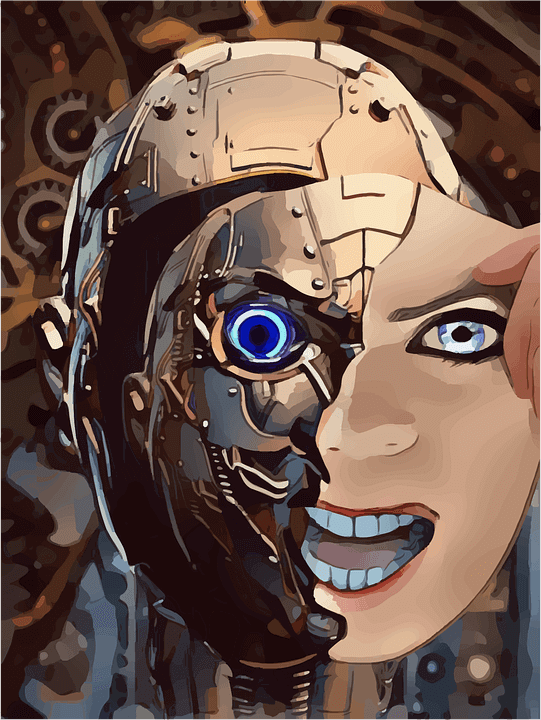
Finally, the ancient story also has a silver lining to it and gives a subtle hint that as long as a Talos Robot has a weakness left in his ankle (an Achilles heel?), maybe human race (even if they are tiny and less powerful than a developed robot) can still destroy such a machine if it decides to go against living people.
The story of Talos in Greek mythology is very remarkably similar to the legend of another ancient Greek hero – Achilles, who also died after sustaining an injury to his heel. Achilles' whole body became invulnerable when his mother dipped him in the water of river Styx as a baby, but the heel by which he was held remained unsubmerged in water & hence became his weak point; which ultimately was the cause of his death.
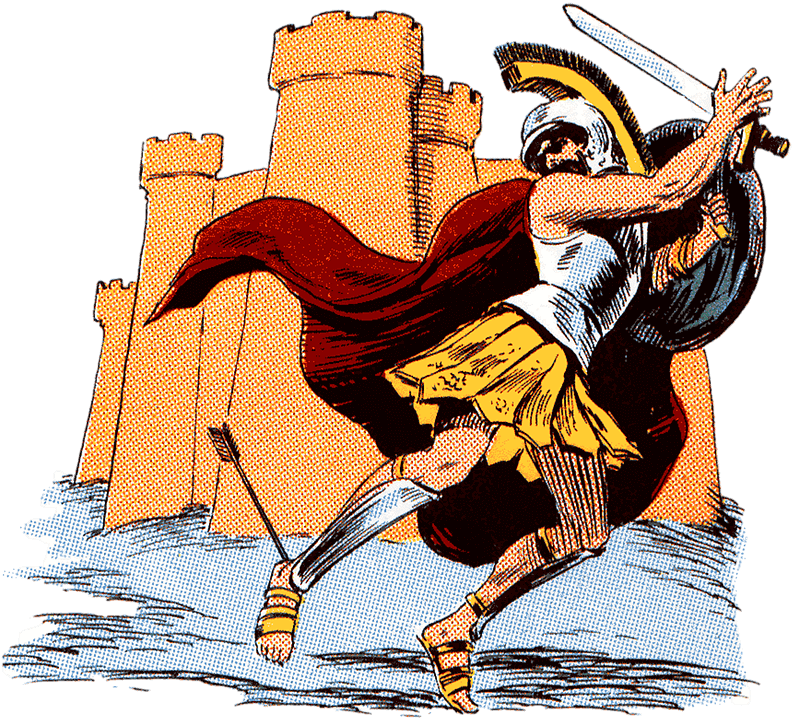
For many Talos in Greek Mythology was not just the guardian of the island of Crete, he was a manifestation of a thought process that was much ahead of its time. A giant Talos robot, having a vein running from his neck to his heels, carrying his life source – the divine fluid (ichor), cutting off which could destroy it, sounds very much like an ancient world analogy of a modern world electronic gadget.
Although some scholars well versed with Greek mythology maintain that the creation of bronze statue by a technique known as “lost wax” was common after the 16th century in Crete. They believe that the legend of Talos in Greek mythology is just a mythological transformation of a regular procedure, that originated in the over-imaginative mind of an ancient author.
However, some incidents of ancient Greek mythology & legends, like the story of Troy are based to a certain extent on events that indeed occurred in history. So, when it comes to the story of Talos of Greek mythology, did ancient Greece indeed envision a giant powerful robot to defend their boundaries or was Talos in Greek Mythology just a metaphor for the might & technology of ancient Greek Bronze age, which existed from 2800 BC to 1050 BC in Crete.
The answer to the above question will be guesswork at best. But whatever the answer may be, the story of ancient Talos robot will continue to amaze & fascinate historians and scientist alike even in the future, reminding people that nothing is new under the Sun and when scientist create another Talos robot in the future, would we be prepared for its tight embrace?